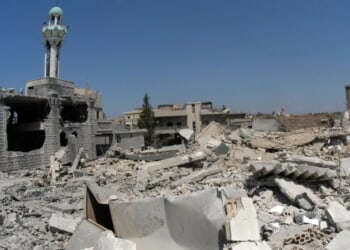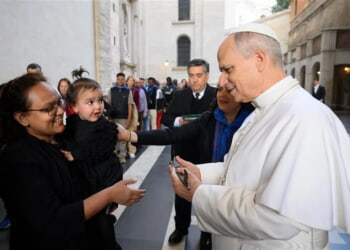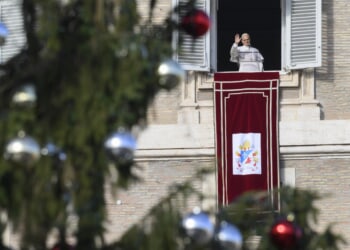I have just finished re-reading Irving Stone’s historical novel, The Agony and the Ecstasy, on the life and times of Michelangelo. It is a rousing and inspiring book, filled with personages of the Italian Renaissance in all their high aims, their passions, their wickedness, their love, their treacheries, their fast-bound friendships, their soaring genius, their failures. Lorenzo the Magnificent is here, and the Platonic academy of scholars he gathered about him; the brilliant architect Bramante is here, filled with envy against his Florentine rival; sweet-tempered Raphael is here, and the vain and many-talented Leonardo, and friendly Ghirlandaio with his earthly imagination, and the elderly miniaturist Bertoldo passing on to the boy Michelangelo all that he had learned from Donatello. Popes are here, the pious and the worldly, ever-deceitful Alexander VI, warlike Julius II, fat and self-satisfied Leo X, ascetic Pius III, and more.
One of the most baleful developments in higher education, as I now see, is this dissociation of the mind from the hands.
Stone did an immense lot of research for the book, as his long bibliography attests, and his careful and accurate descriptions of places and objects, such as the marble quarries at Carrara and the mountain-faces nearby, and the peculiar character of the blocks that Michelangelo chose to work on. The novel is sprinkled with many translations of Michelangelo’s poetry, quite well done, which Stone said he relied on assistants to produce, as also on others to translate for him various texts and letters written in Italian, French, and Latin.
In this way, The Agony and the Ecstasy resembles, in character though of course not in greatness, what Michelangelo and the other artists, architects, and scholars did. They conceived of vast undertakings, which required comprehensive and acutely specific knowledge of many crafts, and teams of men subordinated both to the master and to the hierarchy of his near subordinates.
Even to cover a large wall with fresco painting, regardless of the quality of the work, was a huge project. When Michelangelo was a boy apprenticed to Ghirlandaio, he had to learn how to mix and grind paints, how to prepare a wall for plastering, what recipes to use for the plaster under different conditions, how to draw up the huge sheets of cartoni, the “cartoons,” and to apply them to the walls as a guide, how to overlay one color with another to suggest depth and shading, and countless other tasks. When, soon after, he got his first contracts for sculpture, he had to oversee the choice of the marble blocks, relying on expert stonecutters to sever them from the mountain and to transport them safely down. He needed to build his own forge, requiring assistance from blacksmiths, because he fashioned his own chisels, punches, and files, made to specification according to the peculiarities of the work in hand.
He used assistants to purchase materials he needed, such as hundreds of pounds of wax for molding models of what he was going to sculpt. When he worked in bronze, he needed experts in casting, bell-makers and cannon-makers, who could build controlled fires at extremely high temperatures to cause the metal to pour evenly into the mold. He built his own scaffolding when he painted the Sistine ceiling, and the scaffold itself was a work of craftsmanship in carpentry and the balance of forces, so built as not to require iron poles as stabilizers punching holes in the ceiling itself and thus spoiling the whole.
I don’t suppose it will be controversial to say that such an education as produced Michelangelo is available nowhere in the United States. I do not know if it is available anywhere in the world. But at Thales College, where I now teach, we are embarking on an unusual project of recovery, and one I recommend to private high schools, all classical schools, and boys’ schools especially. Thales is a business college with a firm commitment to a thorough education in the classics and the liberal arts. The business we stress is in the area of making things. The manufacturer, the craftsman, and the scholar in the humanities should be close friends, even collaborators. Michelangelo learned to read and to write Italian poetry not in the school where his father sent him in his early years; there he learned almost nothing.
He learned it by conversing with the scholars that Lorenzo de’ Medici surrounded himself with, from the polymath Pico della Mirandola, the gentle Platonist Ficino, the textual scholar Landino, and the poet and courtier Poliziano. He also gained his inspiration by close reading of Scripture. He could not have conceived of the divinity of the human form had he not had that informal but all the more personal and powerful education. He could not have made his conception manifest had he never gotten his hands rough with the matter he worked on. Nor could he have done so had he not, as everyone else did, run his studio as a business, animated by a team of men, each with his own skills, his responsibilities, and his work in learning, instruction, and execution.
One of the most baleful developments in higher education, as I now see, is this dissociation of the mind from the hands. We end up, for example, with architects who draw abstract designs, but who have never laid a brick, and what they produce is grim and inhuman, as are the glass and steel towers that ruin the character of our great cities, or incompetent in taking ordinary human actions and feelings into account, as was the notorious Pruitt-Igoe housing project in St. Louis.
In the other direction, we end up with masons who are good with their hands, who can build a fine wall, but who know little of the West’s heritage of civic art; whose ideas do not soar, because they have never been shown the dome of human accomplishment to which they might aspire. Not that the architects, in this respect, are in a much better position, as that same tradition of civic art has been traduced, scorned, or forgotten.
I confess that I do not understand the pettiness. I had an aspiration when I was young. It was to become a great poet. I won’t say to what extent I have realized that aspiration, but I have not given it up, as the latest work I have executed, immense in conception, will attest. My point is that when I was in college, I wanted to immerse myself in the greatest poets of the English language, from all historical eras, and I did just that; and then I moved on from English to Italian, German, Anglo-Saxon, and Latin, and as I grew older and had begun my career as a professor, moving still farther, with many stumbles and interruptions, to Greek, Hebrew, Welsh, French, Spanish, and more. I wanted to learn from the masters. I still want to learn. The poetic Edda, in Old Norse, beckons, as does Os Lusiados, in Portuguese. When I discover a new meter, as I have in the poetry of Alessandro Manzoni, I feel as an explorer must feel when he climbs to the top of a rise overgrown with trees and tangled bushes, and sees before him an abandoned temple, long forgotten.
Imagine then what might happen if we could join again these powerful forces, the passion to know and the drive to make — to make stupendous things, to build a dome for man to reflect the great vault of heaven above. Why, most of our English teachers themselves have but a passing acquaintance, if that, with such prodigious works of genius as The Canterbury Tales and Paradise Lost. They have been given to suppose that such works, from the benighted past, are beneath their attention, or if they do study them, they do so to debunk them, to expose them as incompetent frauds, which they most certainly were not.
Maybe it is futile to begin with those who have spent their lives in the academy, unless they have managed against all odds to preserve their love of great literature and art for their own sake. Maybe we can begin instead with carpenters, masons, metalworkers, and various other craftsmen, with courses of study designed to bring them together and to learn of the great works that the men of old once wrought, not always in wood and metal and stone, but with words also, and thoughts, and deeds. They, I believe, would be more readily inspired, hungrier to learn, than anybody else in our time. It is certainly worth trying. It will be like what Donatello did when he went to Rome, its treasures buried under centuries of earth and debris. Donatello went there with a shovel. We too have nothing to lose, and a world to begin to recover.
READ MORE from Anthony Esolen:

![Scott Bessent Explains The Big Picture Everyone is Missing During the Shutdown [WATCH]](https://www.right2024.com/wp-content/uploads/2025/11/Scott-Bessent-Explains-The-Big-Picture-Everyone-is-Missing-During-350x250.jpg)













